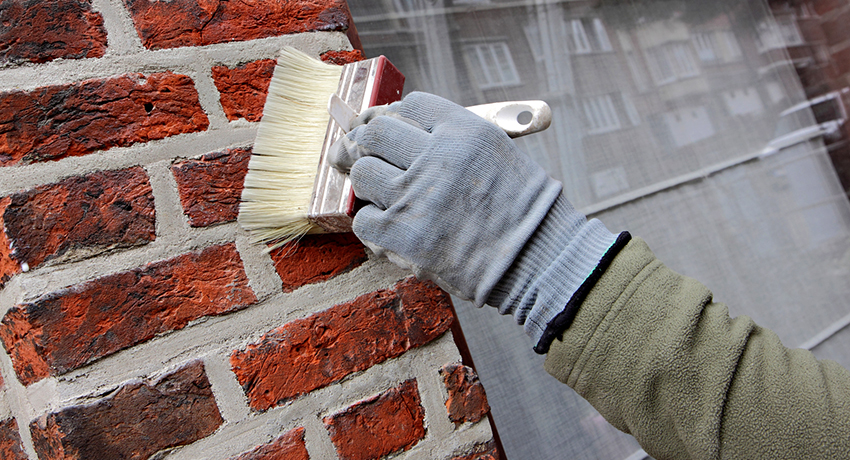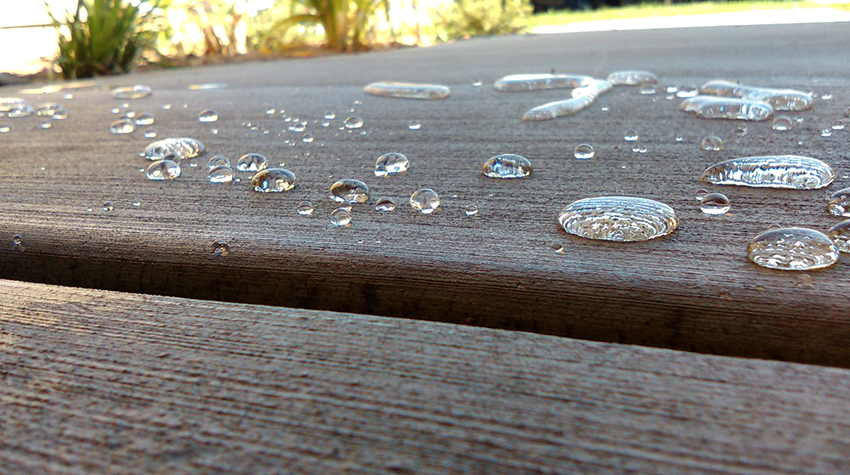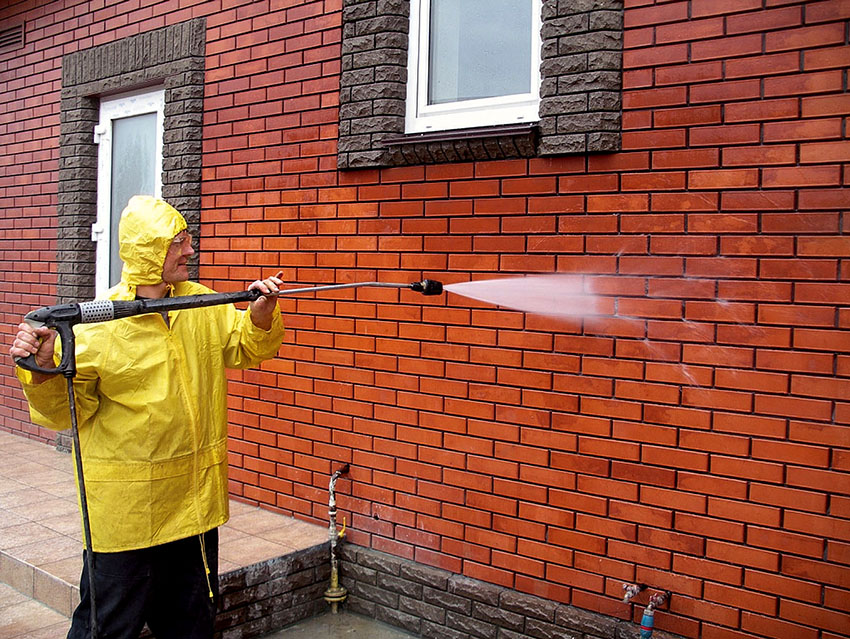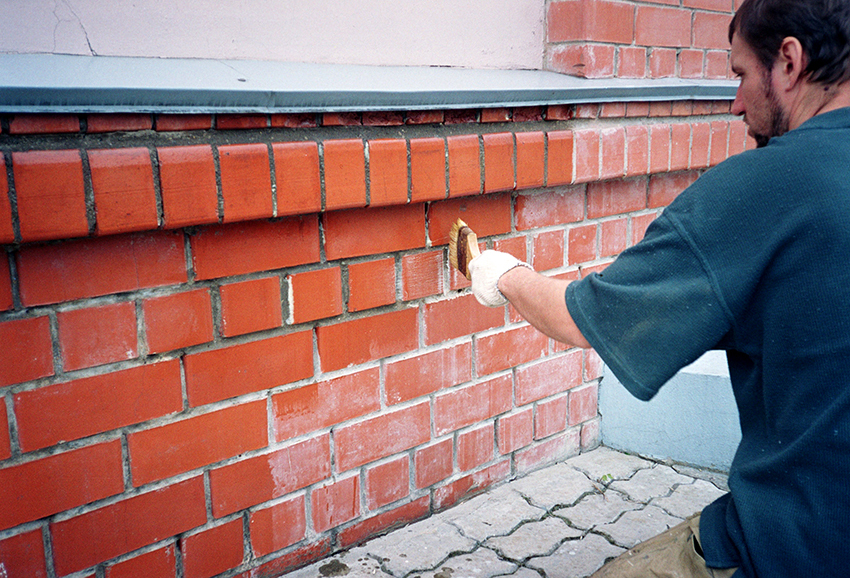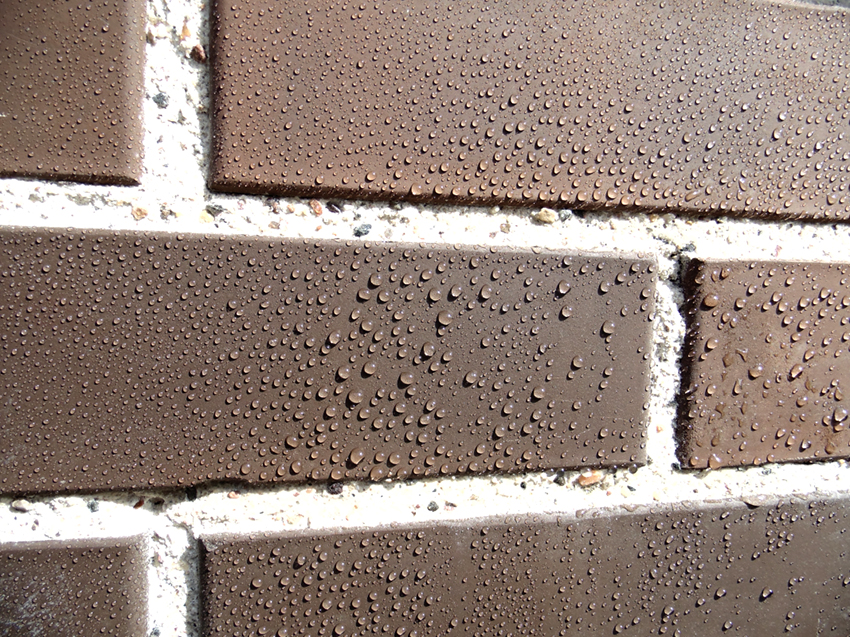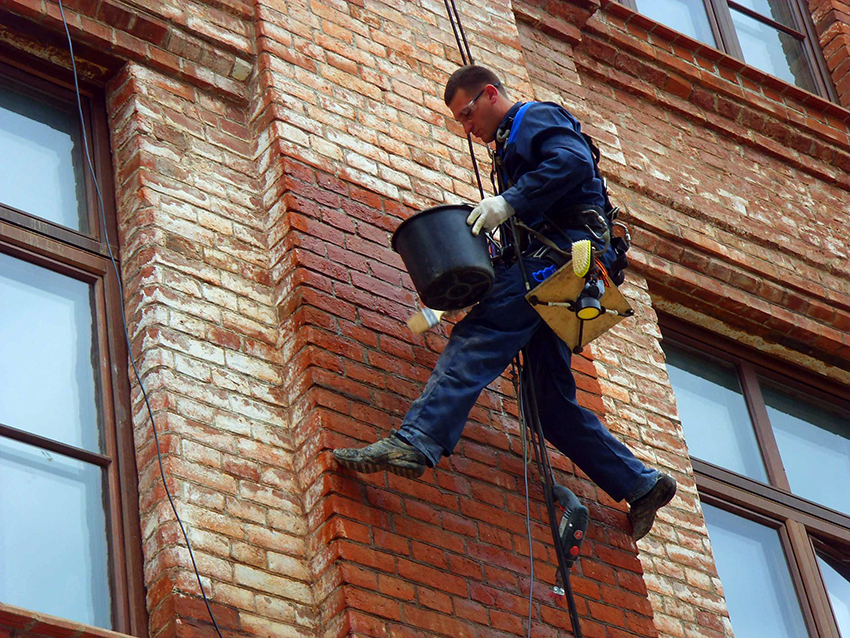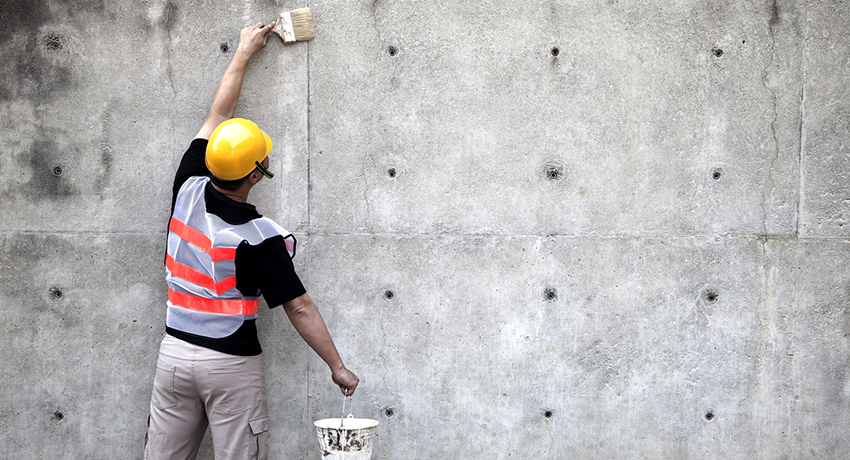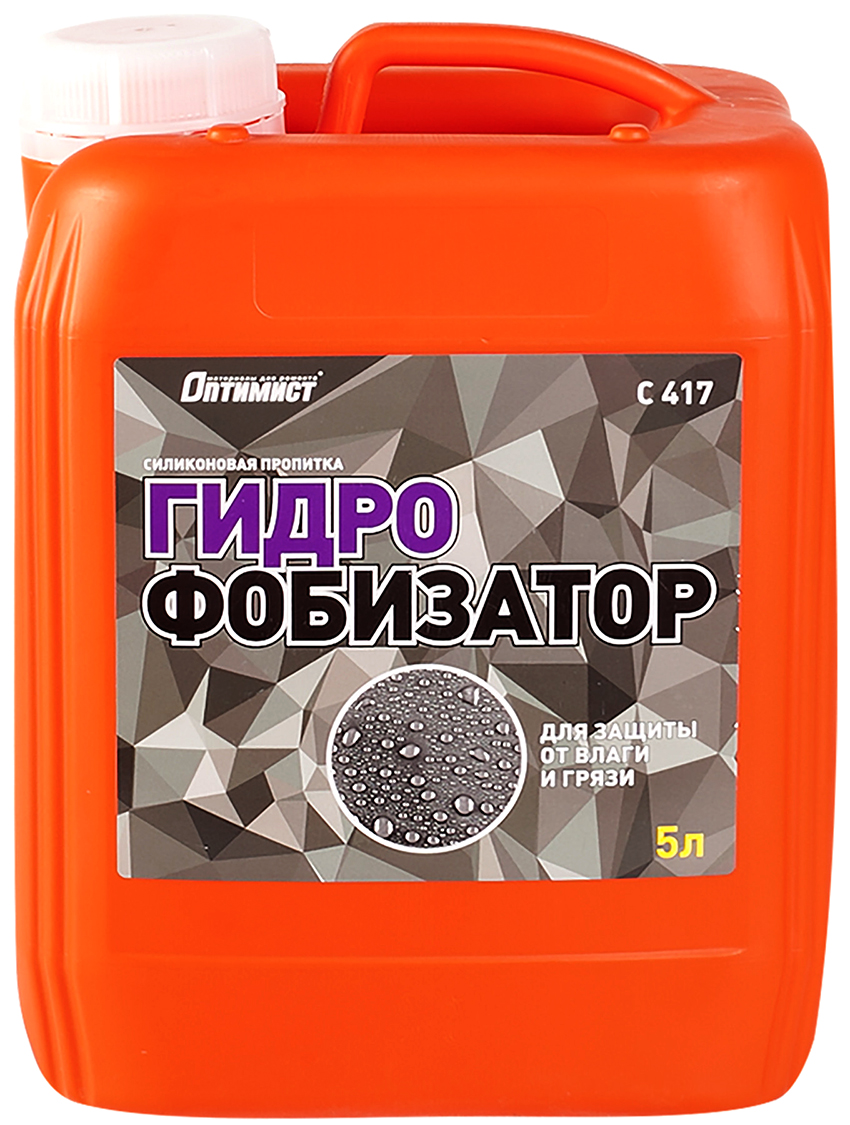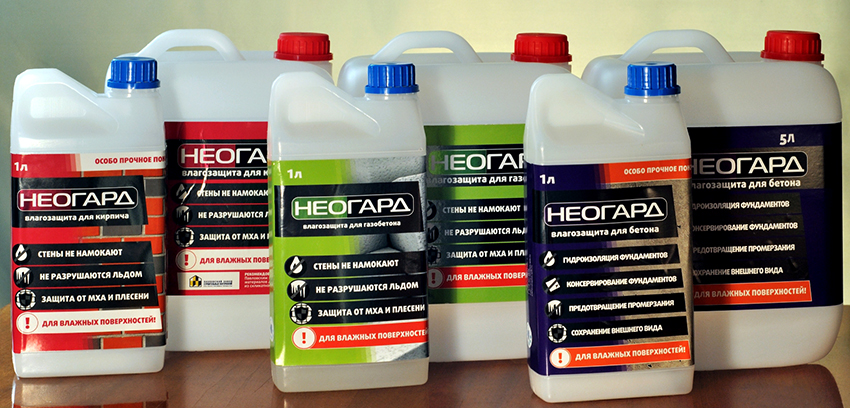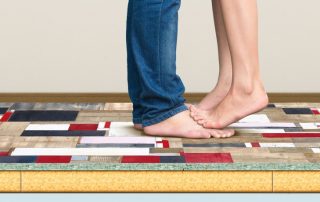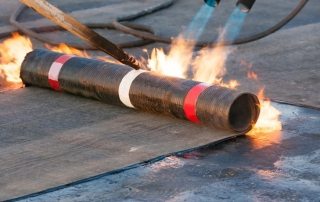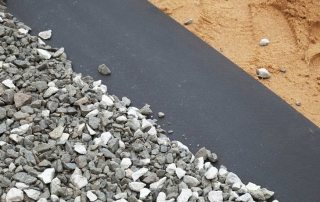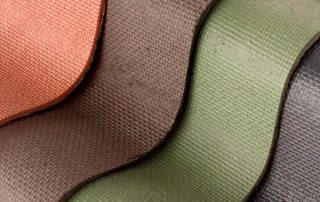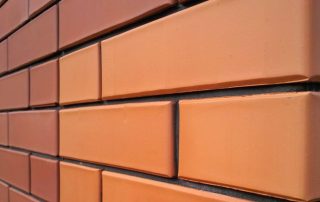The external environment does not spare even the highest quality materials used for construction or renovation. Premature wear, cracks, destruction of surfaces, formation of efflorescence and mold not only spoil the appearance of buildings, but also directly affect the durability of structures. Special impregnations - water repellents for concrete, brick, stone and paving slabs - can avoid fixed repair costs and prevent wear and tear of facades.
Content [Hide]
- 1 Hydrophobization: what it is and what it is used for
- 2 Water repellents for concrete: solutions to various problems
- 3 Waterproofing agents for bricks: combating porosity
- 4 What are water repellents for stone used for?
- 5 Water repellents for paving slabs: protection from water and pollution
- 6 The main criteria for the selection of hydrophobic fluids
Hydrophobization: what it is and what it is used for
In construction, the term hydrophobization is understood as imparting properties to a material that reduce its ability to be wetted with water. A similar need arises due to the porous structure of facade cladding materials and their ability to absorb groundwater and precipitation. The main negative consequence of this phenomenon is an increased risk of structural failure due to the formation of cracks, gradual leaching of the material and premature aging.
In addition, precipitation and groundwater are mixtures of salts of various compositions, which, when interacting with building materials, form new chemical compounds. The result of their influence can be visually observed in the form of large-scale efflorescence, making the facade of the building very unsightly. Purposes of using hydrophobization:
- protect the material from moisture penetration;
- improve the thermal insulation characteristics of the treated surface;
- completely protect against efflorescence;
- increase the resistance of structures to corrosion and low temperatures;
- prevent the formation of colonies of lichens and mold on the surface;
- to strengthen the structure of materials and, as a result, to increase their strength.
Important! Hydrophobization reduces the water absorption of materials by 15-25 times.
By the type of application, hydrophobization is:
- superficial, when a special treatment composition is applied only to the top layer of the material - this protection lasts for about 10 years;
- volumetric, when special holes are drilled for the purpose of better impregnation with a special composition - performed once, for the entire period of operation of the structure.
What is used for hydrophobization of building materials
To increase the water-repellent properties of materials in construction, special compositions are used for surface treatment - these are water repellents. What is special about them and how they can protect the surface, let's try to figure it out in this article.
The principle of operation of a special impregnation is that it does not remain on the surface of the material being processed, but is absorbed by it. Therefore, protection from water is not superficial, but internal, aimed at isolating the capillaries of the material. Water repellents can penetrate to a depth of 15-20 mm - this forms a protective insulating layer.
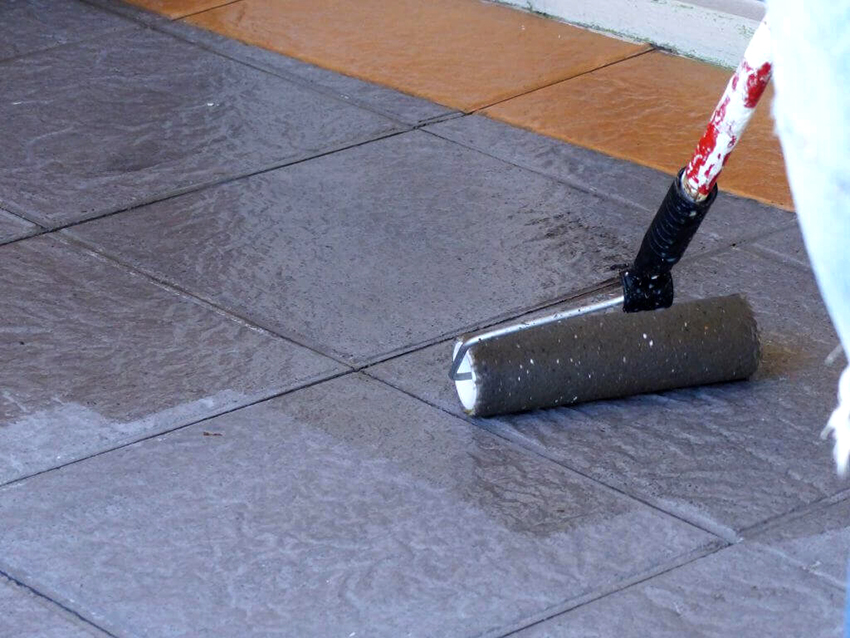
To impart water-repellent properties to materials, special impregnations are used, which are called water repellents.
Features of the properties of water repellents:
- the ability to process the surface of any building material, while distinguishing between universal impregnations (used for a number of surfaces) and narrowly targeted (work with only one type of surface);
- practically do not reduce vapor permeability (loss of 10-15%), which allows the materials to maintain air exchange and eliminate the formation of mold and mildew;
- help to protect the surface from dust and dirt, their easy removal by rain;
- versatility of use, which allows the mixture to be used independently or as an additional component in the formation of facade surfaces;
- due to their transparency, they do not change the appearance of structures, and in some cases they even help to improve it;
- endow building materials with additional qualities, such as frost resistance (3-5 times) and protection against corrosion (1.5-2 times);
- the deadlines for subsequent repairs are postponed: the next processing will be required in 10 years, and in some cases it can be completely avoided;
- the price of water repellents is significantly lower than the cost of other waterproofing options.
Specialized impregnations for surface materials are produced by industry in mixtures or concentrates and diluted in certain proportions with water, but there are those that are completely ready for use. According to their chemical composition, they are divided into water-based and silicone substances. Silicone water repellents are considered the best, since they have advantages in chemical and thermal resistance, they have the ability to penetrate deeper into the material. They are less susceptible to external influences, which means they form a more durable protection.
Important! Hydrophobization must be carried out at the stage of construction of structures in order to immediately provide for the protection of the facade from the destructive effects of water.
Water repellents for concrete: solutions to various problems
Concrete is one of the most popular building materials for the construction of buildings and structures, therefore its properties and composition are important for the further operation of facilities. The construction of foundations, walls, platforms, the use in laying bricks and forming reinforced concrete structures, etc., leave a certain imprint on the requirements for concrete. The material is strong, but has a low moisture resistance threshold due to increased porosity. Water entering these pores actively contributes to the destruction of the concrete structure and the formation of mold, provoking frequent repairs. The basement parts of buildings and the foundation are especially affected.
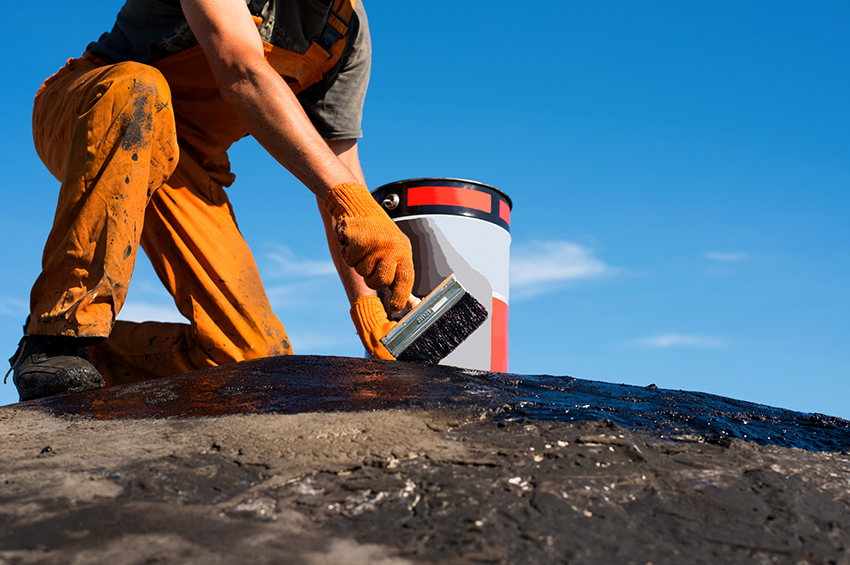
Thanks to water repellents, concrete is less susceptible to destruction and does not need to be repaired for a longer period
Water repellents can be added to concrete in two ways: at the stage of its manufacture and by applying to the surface of finished structures and structures.The use of an impregnation agent as an additive in a concrete solution can additionally reduce the cost of organizing thermal insulation.
In addition to general properties, all hydrophobic additives for concrete have the following additional characteristics:
- increase the density of the mortar and increase the compressive strength of concrete (by 30% from the starting standard values);
- can become a substitute for plasticizers, which are used in a mixture to impart plasticity;
- eliminate the cost of repairs, since they significantly extend the life of buildings;
- raise the water resistance of concrete to W grade;
- increase frost resistance;
- if a reinforcing frame is used with concrete, then the additives simultaneously protect it from corrosion.
The Internet is replete with various ideas and recipes, it was not without advice on how to make a water repellent for concrete with your own hands. You can, of course, try, but there is a high probability that the result will turn out worse than they imagine, or will be completely absent. Therefore, it is recommended to buy a ready-made water repellent for concrete, which one is better to choose - in this matter it is necessary to proceed from the purpose and the desired end result.

Water repellents can be added to concrete at the manufacturing stage or applied to the surface of finished structures
Helpful advice! When choosing impregnation for concrete be sure to pay attention to its purpose. A water repellent for aerated concrete and for concrete are liquids of different properties.
The price of a water repellent for concrete depends on the selected brand and manufacturer. It can also be affected by the multicomponent composition of the mixture, which allows you to get more positive qualities for the treated surface. Silicone-based fluids will cost more, but they have higher protective properties.
Waterproofing agents for bricks: combating porosity
Brickwork is a clear indicator of the influence of environmental conditions on the destruction of building surfaces and structures. No matter how the density properties of brick are enhanced, it still remains a rather porous material that needs special processing. Hydrophobic impregnation for bricks can help protect the material from moisture and dirt, premature failure, cracks.
On brick facades, efflorescence is most often formed, spoiling the appearance. To eliminate them, special means of struggle are applied, which temporarily eliminate the problem. However, to consolidate the cleaning effect and prevent the reappearance of efflorescence, it is recommended to apply the treatment of the brick with a water repellent. Only he is able to cope with such a task.
There is a wide selection of water repellents for bricks on sale. Which one is better to choose: universal for all surfaces or used only for this material? If there is a need to process exclusively brickwork, then you should take a closer look at specialized impregnation products. They are differentiated by concentration, level of protection and taking into account the type of cladding. The price of water repellents for bricks will depend on these factors.
When processing brick surfaces in order to give them water-repellent and other protective properties, it is possible to simultaneously slightly improve the visual characteristics of the facades. For this, water repellents with a "wet stone" effect are used. Tiprom M is one such product that can give a masonry a light sheen and accentuate the color of the brick base.
Helpful advice! Before applying a water repellent with a "wet stone" effect to a brick surface, test the agent on a sample and wait 3-5 days until the protective layer is completely formed.
What are water repellents for stone used for?
Artificial and natural stones are often used for external cladding of facades, fences, when organizing paths, as well as for interior textured decoration of premises. The material can have a different structure - polished or embossed, but each of them has the ability to absorb moisture. Active moisture absorption negatively affects the appearance, leads to the formation of mold and overgrowth with moss or lichen, especially if the outer surface is embossed. When the temperature drops, moisture penetrating into the stone leads to its cracking. To combat these negative factors, protection is used by applying hydrophobic agents.
A water repellent for artificial or natural stone is selected depending on the type of surface and the desired effect. There are universal products that are suitable for all types of surfaces. They are beneficial in the case when it is necessary to process the facade from combined materials, including a stone coating. No less effective are specialized liquids used exclusively for application to stone. They may be intended exclusively for indoor use and may be food safe. This is important for handling sinks and countertops in the kitchen.
Helpful advice! When choosing a hydrophobic external treatment, pay attention to whether it has UV protection, thanks to which the material will last longer.
Water repellents for stone can be intended only for protection or include additional options such as the organization of the "wet stone" effect. After processing, the top layer acquires a slight glossy coating, which makes the stone surface brighter. On packages with a water-repellent liquid, such properties are always indicated. For this purpose, for example, the Optimist water repellent is suitable. He has positive reviews, especially regarding the processing of the external stone cladding.
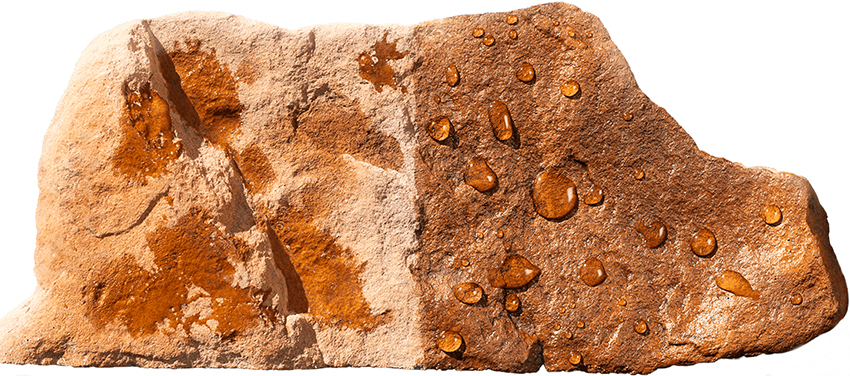
For artificial and natural stone, water repellents must be selected depending on the type of surface
Before large-scale application of the water repellent to the stone surface, check its effect on the remnants of the cladding or in an inconspicuous place. This way you can assess the degree of drying, the speed of processing, the need for a second coat and the quality of the "wet" effect (if you have chosen such a product).
Water repellents for paving slabs: protection from water and pollution
The basis for the production of paving slabs is concrete. It is he who determines the main properties of this facing material, that is, porosity. The danger is that water seeps through the numerous pores inside the paving slabs. It causes the greatest harm to this material in winter, when, freezing, it increases in volume and contributes to the formation of cracks of various sizes, up to a complete split of the tile. If ice forms on the surface of the material, then if it is inaccurately chipped, the coating is often deformed.
Related article:
Penetrating waterproofing for concrete: the best way to protect against moisture
Operating principle. Advantages and disadvantages. Review of popular brands. Varieties of penetrating compositions and features of their application.
The advantage of paving slabs is that, if necessary, you can replace the damaged material with a new one. However, in order to avoid frequent repairs, it is more advisable to use a water repellent for sidewalk laying. The special product has protective properties that protect against the effects of water, frost, sunlight, salts, fungi. After processing, dirt is easily washed off from the sidewalk and ice is chipped off, the appearance of the material is completely preserved.
Important! Water repellents will not be able to protect paving slabs if they are constantly under water.
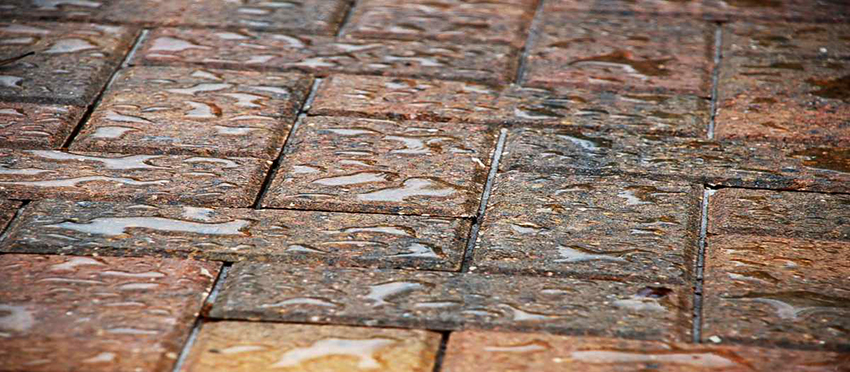
In order for the paving slabs to serve for a long time and do not need frequent repairs, it is recommended to treat them with water repellents
Not every product on the market is suitable for processing this material. In the instructions for universal concrete products, in most cases, they indicate their ineffectiveness for horizontal surfaces. Therefore, it is worth choosing special liquids for paving slabs, for example, the GKZh 11 water repellent, which actively fights against moisture and efflorescence. If the product is sold in a concentrated form, it must be diluted with water in accordance with the instructions, otherwise unaesthetic stains will form on the surface.
The main criteria for the selection of hydrophobic fluids
To opt for any particular water repelling fluid, you should decide on the following questions:
- what surfaces will be processed (material, wet or dry base);
- the level of positive properties that it is desirable to achieve after processing;
- universality of application;
- manufacturer or brand name.
Universal water repellents Aquasil, Ceresit and Optimist
The versatility of application is relevant when it is required to process different surfaces and provide them with identical hydrophobization properties. For these purposes, the Aquasil water repellent of domestic production is suitable, which is produced in concentrated ready-made solutions and has a democratic price. It is suitable for all materials used for roofing or foundations, reduces the water absorption of concrete, foam concrete, natural and artificial stones by 10-15 times, and bricks by 15-40 times. At the same time, the decorative qualities of the processed materials do not suffer. The warranty without additional repair is 10 years, but in some cases, renewal of the coating may not be required even up to 30 years of operation.
Helpful advice! Always follow the exact recipe for the water repellent dilution. Concentration errors can lead to streaks and efflorescence.
Water repellent Ceresit, as a rule, is chosen due to the popularity of the brand, which guarantees the quality of building mixtures. In this case, this is also legitimate. The manufacturer has a series of several universal water-repellent impregnations, in each of which one of the characteristics is enhanced. The most popular Ceresit CT 13 is for highly absorbent types of surfaces, except for horizontal (paving slabs). It perfectly insulates internal small cracks up to 0.2 mm and provides an 8-12 year warranty period, during which re-impregnation is not required.
For the treatment of various surfaces of building structures, we will use the Optimist water repellent. It is not as rich in additional options as Aquasil and Ceresit, but it copes with the task of protection from water and dirt brilliantly. In addition, the product line includes special formulations for individual processing of materials, such as stone, wood. For protection against mold, in order to ensure plasticization, frost resistance of concrete, etc., special means are produced. The liquid is completely ready for use.
Water repellents Neomid, Neogard and Tiprom M: their use and features
Multifunctional in surface treatment is Neomid water repellent. It is applicable to any material, including aerated concrete. Can be applied outside to the facade and indoors. It is sold in a concentrated solution, so the volume of the product ready for treatment is doubled. The manufacturer guarantees 10 years of preservation of the protective properties.
There is no versatility in the Neogard water repellent.It is selected exclusively taking into account the application surface, therefore it has a wide range of specialized impregnations separately for each material. However, all series include 2 more types of hydrophobic coatings - water-based, which are applied exclusively to a dry surface, and an organic solvent, which creates an improved coating regardless of the degree of drying of the substrate. The company gives a guarantee for 5 years of operation.
It is a mistake to believe that the price determines the quality of the impregnation - first of all, the reliability of solutions is ensured by the properties laid down by the manufacturer. Most of the products do not change the appearance of surfaces, but there are liquids that can add gloss to the surface and create a “wet stone” effect. If this is important to you, choose the appropriate water repellent. User reviews on the Internet with accompanying photos will help you evaluate the expected effect of the application. For example, a water repellent Tiprom M can provide a “wet” surface for brick, stone or concrete and add color saturation to materials.
Helpful advice! Choose a water repellent according to the type and quality of the surface. If moisture rarely gets on it, you can get by with cheaper formulations.
Pay attention to the fact whether it is concentrated or ready-to-use. Their cost varies, but the final volume of liquid for processing will also be different. For large areas requiring hydrophobic coating, it is more profitable to choose concentrates.
Follow the recommendations, choose the right one and treat the facing materials with water repellents in time so that they retain an excellent appearance for a long time without repair.
